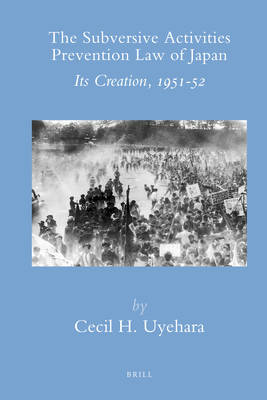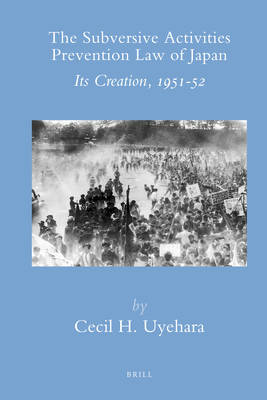
- Afhalen na 1 uur in een winkel met voorraad
- Gratis thuislevering in België vanaf € 30
- Ruim aanbod met 7 miljoen producten
- Afhalen na 1 uur in een winkel met voorraad
- Gratis thuislevering in België vanaf € 30
- Ruim aanbod met 7 miljoen producten
Zoeken
€ 358,95
+ 717 punten
Omschrijving
The Subversive Activities Prevention Law (SAPL) was the last major controversial law to be drafted at the end of the Allied Occupation of Japan (1945-1952) which was managed and controlled by General Headquarters (GHQ) under U.S. General MacArthur and was enacted into law after Japan had regained its formal independence in 1952. Soon after the Occupation began, prewar Japanese internal security laws were ordered abolished by the Occupation. Now that Japan would be re-gaining its independence in 1952, there was urgency to creating a new integrated national internal security law to fill the vacuum created by the Occupation, 1945-1952. The Subversive Activities Prevention Law was to be the centerpiece for maintaining internal security in the new independent Japan. It turned out to be an extremely controversial law that was vociferously opposed by the political opposition in and out of the Diet in light of the prewar history, surrounding how such internal security laws were implemented by the state security apparatus. The demonstrations in 1951-52 against the proposed law, organized by the labor unions, were the largest, loudest and most determined since the end of the war.
This publication is the first analysis in English on how this law was drafted and debated, supported and opposed, using the 20+ drafts of the law, and the subsequent deliberations concerning the proposed law in the Houses of Representatives and Councillors. A short epilogue - since over 50 years have elapsed since the law was initially enacted in 1952 - analyzes the implementation of the law during these years.
This publication is the first analysis in English on how this law was drafted and debated, supported and opposed, using the 20+ drafts of the law, and the subsequent deliberations concerning the proposed law in the Houses of Representatives and Councillors. A short epilogue - since over 50 years have elapsed since the law was initially enacted in 1952 - analyzes the implementation of the law during these years.
Specificaties
Betrokkenen
- Auteur(s):
- Uitgeverij:
Inhoud
- Aantal bladzijden:
- 472
- Taal:
- Engels
- Reeks:
- Reeksnummer:
- nr. 33
Eigenschappen
- Productcode (EAN):
- 9789004180925
- Verschijningsdatum:
- 16/12/2009
- Uitvoering:
- Hardcover
- Formaat:
- Genaaid
- Afmetingen:
- 160 mm x 241 mm
- Gewicht:
- 816 g

Alleen bij Standaard Boekhandel
+ 717 punten op je klantenkaart van Standaard Boekhandel
Beoordelingen
We publiceren alleen reviews die voldoen aan de voorwaarden voor reviews. Bekijk onze voorwaarden voor reviews.








